ADC Mapping With 12 b Values: Can We Improve Image Quality In The Diffusion Sequence of Prostate MRI?
Article Information
Lucas Scatigno Saad1*, George De Queiroz Rosas2, Homero José De Farias E Melo3, Jacob Szejnfeld
1Universidade Federal de São Paulo (UNIFESP). Rua Sena Madureira, 1500, Vila Clementino, 04021-001, São Paulo, SP, Brazil. ORCID: 0000-0002-8203-1251.
2Universidade Federal de São Paulo (UNIFESP). Rua Sena Madureira, 1500, Vila Clementino, 04021-001, São Paulo, SP, Brazil. ORCID: 0000-0001-6939-7112.
3Universidade Federal de São Paulo (UNIFESP). Rua Sena Madureira, 1500, Vila Clementino, 04021-001, São Paulo, SP, Brazil. ORCID: 0000-0002-5287-9294.
4Universidade Federal de São Paulo (UNIFESP). Rua Sena Madureira, 1500, Vila Clementino, 04021-001, São Paulo, SP, Brazil. ORCID: 0000-0002-6145-0529.
*Corresponding Author: Lucas Scatigno Saad, Rua Jaspe, 32, Aclimacao 01531-060 - Sao Paulo, SP – Brazil.
Received: 07 January 2023; Accepted: 19 January 2023; Published: 01 February 2023
Citation:
Lucas Scatigno Saad, George De Queiroz Rosas, Homero José De Farias E Melo, Jacob Szejnfeld. ADC Mapping With 12 b Values: Can We Improve Image Quality In The Diffusion Sequence of Prostate MRI?. Journal of Radiology and Clinical Imaging. 6 (2023): 16-23.
Share at FacebookAbstract
Introduction: Prostate cancer (PCa) is one of the most prevalent tumors in male population. Multiparametric magnetic resonance imaging (mp-MRI) of the prostate is of great importance in the diagnosis of PCa, with particular emphasis on diffusion-weighted sequences. Nevertheless, diffusion-weighted imaging (DWI) sometimes exhibits limited definition and sharpness, hindering characterization of suspect lesions and normal anatomy. To address this challenge in obtaining clearer images, was developed a DWI protocol with 12 b values. Objectives: To compare the sharpness and conspicuity of images obtained by DWI sequences with 4 versus 12 b values in the detection of PCa by mp-MRI. Secondarily, to validate the use of this new sequence in clinical practice by quantitative and comparative analysis of apparent diffusion coefficient (ADC) values, and correlate ADC values with the PI-RADS classification and Gleason score of identified tumors. Methods: A total of 158 mp-MRI scans were evaluated. In all scans, two diffusion sequences were performed, with 4 and 12 b values, and ADC maps were calculated for each (ADC4 and ADC12 respectively). Individual and comparative analyses of image sharpness and quality were done, followed by assessment of correlation with PI-RADS. A sensitivity comparison was also performed for the diagnosis of PCa and the degree of tumor differentiation (Gleason score). Results: Mean ADC4 and ADC12 values in normal tissues (ADC4, 1793.3×10-6 mm2/s; ADC12, 1100×10-6 mm2/s) were significantly higher than in areas of tumor (ADC4, 1105.9×10-6 mm2/s; ADC12, 689.4×10- 6 mm2/s) (p<0.001). ADC values correlated well with the PI-RADS classification, distinguishing scores 3, 4 and 5 and with ADC tending to decline as the Gleason grade (tumor aggressiveness) increased. The conspicuity of the images obtained on ADC12 maps was consistent with greater sharpness compared to ADC4 maps, with high inter-observer agreement and statistical relevanc
Keywords
Image analysis; Artificial intelligence; Machine learning;Computed tomography.
Image analysis articles; Artificial intelligence articles; Machine learning articles; Computed tomography articles
Image analysis articles Image analysis Research articles Image analysis review articles Image analysis PubMed articles Image analysis PubMed Central articles Image analysis 2023 articles Image analysis 2024 articles Image analysis Scopus articles Image analysis impact factor journals Image analysis Scopus journals Image analysis PubMed journals Image analysis medical journals Image analysis free journals Image analysis best journals Image analysis top journals Image analysis free medical journals Image analysis famous journals Image analysis Google Scholar indexed journals Artificial intelligence articles Artificial intelligence Research articles Artificial intelligence review articles Artificial intelligence PubMed articles Artificial intelligence PubMed Central articles Artificial intelligence 2023 articles Artificial intelligence 2024 articles Artificial intelligence Scopus articles Artificial intelligence impact factor journals Artificial intelligence Scopus journals Artificial intelligence PubMed journals Artificial intelligence medical journals Artificial intelligence free journals Artificial intelligence best journals Artificial intelligence top journals Artificial intelligence free medical journals Artificial intelligence famous journals Artificial intelligence Google Scholar indexed journals Machine learning articles Machine learning Research articles Machine learning review articles Machine learning PubMed articles Machine learning PubMed Central articles Machine learning 2023 articles Machine learning 2024 articles Machine learning Scopus articles Machine learning impact factor journals Machine learning Scopus journals Machine learning PubMed journals Machine learning medical journals Machine learning free journals Machine learning best journals Machine learning top journals Machine learning free medical journals Machine learning famous journals Machine learning Google Scholar indexed journals Computed tomography articles Computed tomography Research articles Computed tomography review articles Computed tomography PubMed articles Computed tomography PubMed Central articles Computed tomography 2023 articles Computed tomography 2024 articles Computed tomography Scopus articles Computed tomography impact factor journals Computed tomography Scopus journals Computed tomography PubMed journals Computed tomography medical journals Computed tomography free journals Computed tomography best journals Computed tomography top journals Computed tomography free medical journals Computed tomography famous journals Computed tomography Google Scholar indexed journals Prostate cancer articles Prostate cancer Research articles Prostate cancer review articles Prostate cancer PubMed articles Prostate cancer PubMed Central articles Prostate cancer 2023 articles Prostate cancer 2024 articles Prostate cancer Scopus articles Prostate cancer impact factor journals Prostate cancer Scopus journals Prostate cancer PubMed journals Prostate cancer medical journals Prostate cancer free journals Prostate cancer best journals Prostate cancer top journals Prostate cancer free medical journals Prostate cancer famous journals Prostate cancer Google Scholar indexed journals diffusion-weighted imaging articles diffusion-weighted imaging Research articles diffusion-weighted imaging review articles diffusion-weighted imaging PubMed articles diffusion-weighted imaging PubMed Central articles diffusion-weighted imaging 2023 articles diffusion-weighted imaging 2024 articles diffusion-weighted imaging Scopus articles diffusion-weighted imaging impact factor journals diffusion-weighted imaging Scopus journals diffusion-weighted imaging PubMed journals diffusion-weighted imaging medical journals diffusion-weighted imaging free journals diffusion-weighted imaging best journals diffusion-weighted imaging top journals diffusion-weighted imaging free medical journals diffusion-weighted imaging famous journals diffusion-weighted imaging Google Scholar indexed journals Multiparametric magnetic resonance imaging articles Multiparametric magnetic resonance imaging Research articles Multiparametric magnetic resonance imaging review articles Multiparametric magnetic resonance imaging PubMed articles Multiparametric magnetic resonance imaging PubMed Central articles Multiparametric magnetic resonance imaging 2023 articles Multiparametric magnetic resonance imaging 2024 articles Multiparametric magnetic resonance imaging Scopus articles Multiparametric magnetic resonance imaging impact factor journals Multiparametric magnetic resonance imaging Scopus journals Multiparametric magnetic resonance imaging PubMed journals Multiparametric magnetic resonance imaging medical journals Multiparametric magnetic resonance imaging free journals Multiparametric magnetic resonance imaging best journals Multiparametric magnetic resonance imaging top journals Multiparametric magnetic resonance imaging free medical journals Multiparametric magnetic resonance imaging famous journals Multiparametric magnetic resonance imaging Google Scholar indexed journals apparent diffusion coefficient articles apparent diffusion coefficient Research articles apparent diffusion coefficient review articles apparent diffusion coefficient PubMed articles apparent diffusion coefficient PubMed Central articles apparent diffusion coefficient 2023 articles apparent diffusion coefficient 2024 articles apparent diffusion coefficient Scopus articles apparent diffusion coefficient impact factor journals apparent diffusion coefficient Scopus journals apparent diffusion coefficient PubMed journals apparent diffusion coefficient medical journals apparent diffusion coefficient free journals apparent diffusion coefficient best journals apparent diffusion coefficient top journals apparent diffusion coefficient free medical journals apparent diffusion coefficient famous journals apparent diffusion coefficient Google Scholar indexed journals Gleason grade articles Gleason grade Research articles Gleason grade review articles Gleason grade PubMed articles Gleason grade PubMed Central articles Gleason grade 2023 articles Gleason grade 2024 articles Gleason grade Scopus articles Gleason grade impact factor journals Gleason grade Scopus journals Gleason grade PubMed journals Gleason grade medical journals Gleason grade free journals Gleason grade best journals Gleason grade top journals Gleason grade free medical journals Gleason grade famous journals Gleason grade Google Scholar indexed journals region of interest articles region of interest Research articles region of interest review articles region of interest PubMed articles region of interest PubMed Central articles region of interest 2023 articles region of interest 2024 articles region of interest Scopus articles region of interest impact factor journals region of interest Scopus journals region of interest PubMed journals region of interest medical journals region of interest free journals region of interest best journals region of interest top journals region of interest free medical journals region of interest famous journals region of interest Google Scholar indexed journals
Article Details
1. Introduction
Prostate cancer was the second most frequently diagnosed cancer and the fifth cause of death by cancer in the male population over the world in 2020 [1].
Magnetic resonance imaging (MRI) for evaluation of the prostate entered clinical use in the mid-1980s [2-3], with the objective of staging already diagnosed tumors. Major technological advances in the field have made it possible to explore the potential of this method for detecting suspicious lesions as well.
Diffusion-weighted imaging (DWI) is a functional MRI sequence that measures the signal resulting from the movement of water molecules within tissues. DWI can be substantially useful as an adjunct to diagnosis of PCa, with particular importance since the advent of PI-RADS version 2 and mainly for tumors in the peripheral zone, having become a key sequence to determine the presence and severity of focal lesions [4-5].
Diffusion sequences can be obtained using at least two different b values, that demonstrate different ranges of motion of the targeted molecules. This signal difference is calculated by a first-degree exponential equation that yields the apparent diffusion coefficient (ADC). The ADC is expressed in square millimeters per second (mm2/s). It is a reproducible measurement of diffusion which can be obtained on any workstation by drawing a region of interest (ROI) and generates the ADC map image.
The correlation between numerical ADC values and the aggressiveness of prostate tumors has been widely studied and documented in the literature [6-11]. Lesions with significant diffusion restriction (low ADC values) are associated with high histological aggressiveness as measured by the Gleason score and, therefore, can correlate with prognosis and treatment planning for these patients [7-8-9].
Prostate images obtained with high b values have excellent sensitivity to demonstrate lesions, at the expense of image distortion and loss of spatial resolution [10]. Other studies have reported overlap in ADC values in some situations; namely, those obtained from diffusion sequences with b values up to 1000 s/mm2 may represent either normal or neoplastic tissue [11-12]. There is also no consensus in the current literature as to which and how many different b values should be used for MRI of the prostate between different protocols and equipment [13-14].
This technical limitation of DWI motivated the search for improvements, particularly with the objective of improving image resolution. Imaging protocols have been developed to analyze the behavior of the normal prostate and suspicious lesions on sequences with distinct types and numbers of b values. Among these, increasing the number of b values acquired to 12 appeared to be particularly helpful.
The need to validate the diagnostic utility of this new technique prompted to conduct this study, which is based on a qualitative and quantitative comparison of the new technique with that used in the standard routine MRI of the prostate.
Diffusion-weighted imaging is a key component of mp-MRI and fulfills the appropriate criteria for the diagnosis of PCa. However, diffusion images and ADC maps sometimes have limited resolution, making it difficult to properly assess the prostate and identify lesions. To improve the quality of visualization and anatomical definition of diffusion sequences without losing its primary (diagnostic) capacity, a new protocol was developed, with acquisition of 12 increasing b values to compare it with the standard 4 b value diffusion technique used in the routine protocol of prostate mp-MRI. The key objectives of this study were:
- to compare the sharpness and conspicuity of images obtained by DWI sequences with 4 versus 12 b values in evaluation of the normal prostate and for characterization of suspicious lesions; and
- to establish the relationship between ADC measures generated by the two techniques and assess their correlation with Gleason grades.
2. Material and Methods
2.1 Case series
Prostate mp-MRI scans performed on 162 patients with clinical or laboratory indications for PCa testing were evaluated. The study sample comprised patients with a clinically significant increase in PSA and/or abnormal digital rectal examination performed for cancer screening, as well as patients with confirmed PCa who underwent MRI for tumor staging. All scans were carried out from a specialized diagnostic medicine center. Due to corrupted files or lost images reported by de PACS system, 4 patients had to be excluded from de analysis.
2.2 Technical Parameters
Image acquisition was performed in 3-Tesla scanners with a 45 mT/m gradient (Magnetom Verio and Magnetom Skyra; Siemens Medical Systems, Erlangen, Germany), using a standard torso coil.
The sequences performed are shown in Table 1 and described below: axial T2 spin-echo, coronal and sagittal, for assessment of prostate morphology (256 x 230 matrix, slice thickness 3.0 mm, FOV 160 x 160 mm, TR = 3560 ms, TE = 114 ms), and axial T1 spin-echo (256 x 230 matrix, slice thickness 3.0 mm, FOV 160 x 160 mm, TR = 550 ms, TE = 9.5 ms).
Table 1: MRI sequences performed in the study protocol.
|
Sequence |
Thickness (mm) |
FOV (mm) |
TR (ms) |
TE (ms) |
Matrix |
b (s/mm2) |
|
Sagittal T2 |
3 |
160 |
3,790 |
114 |
256 x 204 |
|
|
Axial T2 |
3 |
150 |
3,930 |
124 |
256 x 230 |
|
|
Coronal T2 |
3 |
160 |
3,560 |
114 |
256 x 230 |
|
|
Axial T1 |
3 |
150 |
550 |
9.5 |
256 x 230 |
|
|
Axial T2 FS |
3 |
150 |
5,200 |
134 |
256 x 204 |
|
|
Diffusion (ADC4) |
3 |
240 |
5,500 |
75 |
128 x 128 |
0; 100; 400; 1000 |
|
Diffusion (ADC12) |
3 |
250 |
5,900 |
72 |
128 x 128 |
0; 50; 100; 150; 300; 600; 900; 1200; 1500; 1800; 2100; 2400 |
|
T2_haste_AXIAL Pelvis |
5 |
320 |
1,500 |
96 |
320 x 260 |
|
|
Axial In-Out Phase |
2.8 |
377 |
3.51 |
1.1 |
256 x 256 |
|
|
T1_vibe_fs_cor_p2_bh_384 |
1.5 |
350 |
3.92 |
1.62 |
512 x 332 |
|
|
T1 VIBE fs ax bh P2 spair |
1.7 |
330 |
3.17 |
1.59 |
320 x 224 |
|
|
Perfusion Axial |
1.6 |
200 |
3.81 |
1.53 |
288 x 172 |
|
|
T1_vibe_fs_cor -Pgd |
1.5 |
350 |
3.92 |
1.62 |
512 x 332 |
Two diffusion weighted gradient sequences (128 x 128 matrix, slice thickness 3.0 mm, FOV 240 x 240 mm) were employed for functional assessment of the prostate: diffusion 4 (four b values = 0, 100, 400, and 1000 s/mm2) and diffusion 12 (twelve b values = 0, 50, 100, 150, 300, 600, 900, 1200, 1500, 1800, 2100, and 2400 s/mm2).
Except in patients with absolute contraindications, the standard protocol included dynamic pre- and post-contrast enhancement images.
Post-processing was then performed to calculate ADC maps with 4 b values (ADC4) and with 12 b values (ADC12), using a first-degree exponential equation model.
2.3 Analysis of Imaging Findings
Images from morphology and functional sequences were evaluated synchronously and simultaneously on a dedicated workstation (syngo.via™, Siemens) and analyzed by a radiologist with expertise in prostate imaging. The imaging criteria for a clinically significant prostatic lesion (suspicion for cancer) in the peripheral zone were those described in PI-RADS version 2 (5).
Measurements of ADC4 and ADC12 values were performed using the region of interest (ROI) tool in areas identified as suspicious, allowing for the largest possible lesion area and copying the same area to the ADC4 and ADC12 maps (Figure 1), through a specific tool that duplicated the ROI measurement for the sequence of interest. In the absence of a lesion, measurements were performed only on areas of normal prostate tissue in the peripheral zone.
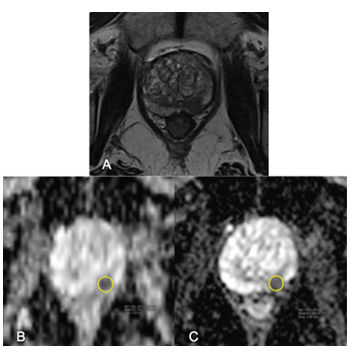
Figure 1: Representative magnetic resonance imaging in patient with a prostate lesion
Magnetic resonance imaging of the prostate in a patient with a suspicious lesion. A) T2 sequence showing the morphological appearance of the lesion in the left peripheral zone. B) ADC4; lesion with diffusion restriction. Yellow circle denotes the measurement performed through the ROI tool. C) ADC12; lesion with diffusion restriction. Yellow circle denotes the measurement performed through the ROI tool.
To assess image quality on the ADC maps, all scans were anonymized, randomly ordered for both sequences, and analyzed by two observers. Image quality for anatomical evaluation and lesion identification was scored on a Likert scale from 1 (very low sharpness) to 5 (excellent sharpness). Images were classified for sharpness and conspicuity in the following parameters: anatomy
of the prostate and visualization of the lesion (when present). To assess anatomy, the parameters were visualization of margins, ability to differentiate between the different zones of the prostate, and its relationship to adjacent structures. When a suspicious lesion was present, the criteria of interest were its location and margins.
2.4 Statistical Analysis
Means, medians, and standard deviations of the ROI measurements of ADC4 and ADC12 were calculated for normal areas and lesion areas. Student’s t-test was used to compare signal behavior between normal and lesion areas. A regression model with Pearson correlation was used to compare measurements obtained in ADC4 and in ADC12. The mean ADC values were correlated with the Gleason score of the corresponding biopsy specimens, using dispersion models calculated by analysis of variance (ANOVA) and the Mann-Whitney U test, respectively. Receptor operating characteristic (ROC) curves were used to calculate the sensitivity and specificity of the parameters of interest for cancer prediction.
Regarding analysis of image quality, paired Wilcoxon tests were used for comparison between sequences and between observers, while the agreement between observer scores was calculated with Kendall’s Tau-b coefficient.
3. Results
Overall, 50 patients had suspicions lesions (as defined by the mp-MRI clinically significant inclusion criteria) measurable by the study method. Normal areas were measured both in patients with and those without suspicious lesions, for a total of 158 patients.
Means, medians, standard deviations, and ranges are given in Table 2.
Table 2: ADC measurements obtained in ADC4 and ADC12
|
Normal ADC4 |
Lesion ADC4 |
Normal ADC12 |
Lesion ADC12 |
|
|
Mean |
1793.3 |
1105.9 |
1100 |
689.4 |
|
95% FI for mean |
||||
|
Lower limit |
1748.2 |
1022 |
1071.9 |
642.6 |
|
Upper limit |
1838.3 |
1189.8 |
1128.1 |
736.1 |
|
Median |
1829.5 |
1162 |
1092.5 |
680 |
|
Standard deviation |
286.4 |
298.3 |
178.7 |
166.1 |
|
Minimum |
1057 |
478 |
665 |
260 |
|
Maximum |
2631 |
1695 |
1461 |
947 |
values expressed as 10-6 mm2/s.
Means and medians were higher in normal areas and lower in lesion areas. Absolute ADC values were lower overall with the ADC12 sequence than with ADC4, as shown by analysis of the range of values (min-max) obtained from each sequence.
Comparison between mean ADC4 values for normal versus lesion areas showed significantly higher means in normal areas than in lesion areas (Student’s t-test for paired samples, p < 0.001) (Figure 2). The same relationship was observed in ADC12 values, with significantly higher means in normal areas than in lesion areas, demonstrating similarity between the two techniques (Figure 3).
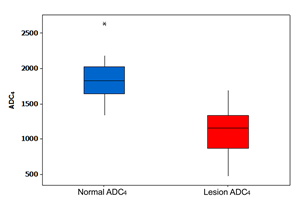
Figure 2: Box-plot of Normal ADC4 and Lesion ADC4
Box diagram showing ADC4 values for normal areas (blue) higher than for lesion areas (red). p < 0.001. (Unit mm/s2). ADC, apparent diffusion coefficient
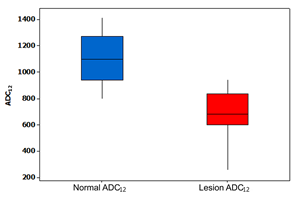
Figure 3: Box-plot of Normal ADC12 and Lesion ADC12.
Box diagram showing ADC12 values for normal areas (blue) higher than for lesion areas (red). p < 0.001. (Unit mm/s2). ADC, apparent diffusion coefficient.
Given this similarity in behavior between the two maps, measurements were analyzed using a regression model between normal areas and lesion areas (Figure 4). This revealed a constant correlation between ADC4 and ADC12 measurements in lesion areas, which yielded the following regression formula:
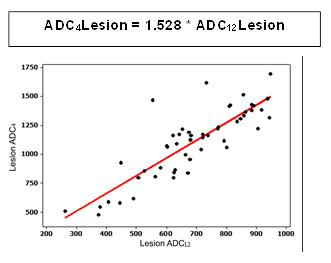
Figure 4: Scatter plot of ADC4 and ADC12 values in lesion areas. (Unit mm/s2).
Using the same regression model, a similar correlation was observed between ADC4 and ADC12 measurements in normal areas (Figure 5), yielding the following formula:
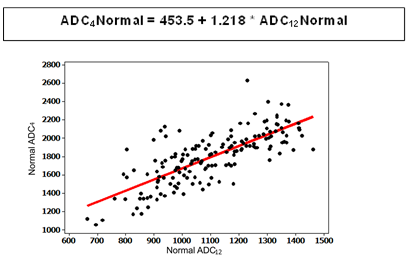
Figure 5: Scatter plot of ADC4 and ADC12 values in normal tissue. (Unit mm/s2)
Of the 158 patients included, 52 underwent prostate biopsy, with the following results: cancer confirmed in 28 (53.8%), cancer ruled out in 14 (27.0%), prostatitis diagnosed in 7 (13.4%), atypical small acinar proliferation in 2 (3.8%), and prostatic intraepithelial neoplasia in 1 (2.0%). Gleason scores for the patients with confirmed prostate neoplasm were as follows: 11 patients were Gleason 6, 10 patients were Gleason 7, 4 patients were Gleason 8, and 3 patients were Gleason 9. Gleason scores were pooled to facilitate analysis, with both 3 + 4 and 4 + 3 scores classified as Grade 7 and 4 + 5 and 5 + 4 classified as Grade 9. The mean ADC4 and ADC12 values for the different Gleason grades are given in Table 3.
Table 3: Mean ADC values and Gleason grades
|
Gleason 6 |
Gleason 7 |
Gleason 8 |
Gleason 9 |
|
|
Mean ADC4 |
1121.6 |
1032.8 |
885.5 |
667.7 |
|
Mean ADC12 |
706.4 |
663.3 |
555.8 |
471 |
values expressed as 10-6 mm2/s.
As shown in the table, mean ADC values decreased as the Gleason score increased; however, on analysis of correlation, these differences in were not statistically significant for differentiation of pathological grades (p = 0.127 for ADC4, p = 0.165 for ADC12). This demonstrates a trend towards lower ADC values with increasing pathological aggressiveness on both ADC maps.
Analysis of the predictive value of the ADC maps for the detection of confirmed PCa (through ROC curves and subsequent AUC calculation) showed that both were significantly predictive for cancer (p <0.05); the ADC4 map had a minimum cut-off value of 1153 x 10-6 mm2/s, with AUC = 0.724 (95% CI 0.609-0.893), 71.5% sensitivity, and 72.3% specificity; the ADC12 map had a minimum cutoff value of 658.5 x 10-6 mm2/s, AUC = 0.729 (95% CI 0.575-0.884), 71.4% sensitivity, and 70.6% specificity (Figure 6).
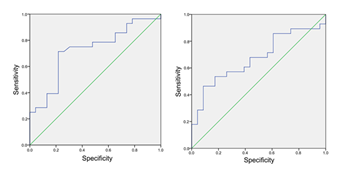
Figure 6: ROC curves for ADC4 (left) and ADC12 (right). p <0.05.
The results of image quality evaluation, performed by two observers using a Likert scale from 1 to 5, are summarized in Table 4. The mean anatomical conspicuity score was 3.037 for ADC4 and 4.446 for ADC12. For lesion conspicuity, ADC4 had a mean score of 3.489, versus 3.826 for ADC12.
Table 4: Classification of image quality in ADC4 and ADC12 maps for normal anatomy and suspicious lesions, with interobserver agreement coefficients
|
Reader 1 |
Reader 2 |
Kendall’s Tau-b |
|||||
|
1 |
2 |
3 |
4 |
5 |
Total |
||
|
Lesion conspicuity, ADC4 |
0.836* |
||||||
|
1 |
0 |
0 |
0 |
0 |
0 |
0 |
|
|
2 |
0 |
1 |
0 |
1 |
0 |
2 |
|
|
3 |
0 |
0 |
21 |
1 |
0 |
22 |
|
|
4 |
0 |
0 |
1 |
25 |
0 |
26 |
|
|
5 |
0 |
0 |
0 |
0 |
0 |
0 |
|
|
Total |
0 |
1 |
22 |
27 |
0 |
50 |
|
|
Lesion conspicuity, ADC12 |
0.905* |
||||||
|
1 |
0 |
0 |
0 |
0 |
0 |
0 |
|
|
2 |
0 |
0 |
0 |
0 |
0 |
0 |
|
|
3 |
0 |
0 |
12 |
1 |
0 |
13 |
|
|
4 |
0 |
0 |
0 |
32 |
0 |
32 |
|
|
5 |
0 |
0 |
0 |
2 |
3 |
5 |
|
|
Total |
0 |
0 |
12 |
35 |
3 |
50 |
|
|
Anatomic conspicuity, ADC4 |
0.907* |
||||||
|
1 |
0 |
0 |
0 |
0 |
0 |
0 |
|
|
2 |
0 |
13 |
1 |
0 |
0 |
14 |
|
|
3 |
0 |
0 |
122 |
0 |
0 |
122 |
|
|
4 |
0 |
0 |
5 |
17 |
0 |
22 |
|
|
5 |
0 |
0 |
0 |
0 |
0 |
0 |
|
|
Total |
0 |
13 |
128 |
17 |
0 |
158 |
|
|
Anatomic conspicuity, ADC12 |
0.927* |
||||||
|
1 |
0 |
0 |
0 |
0 |
0 |
0 |
|
|
2 |
0 |
0 |
0 |
0 |
0 |
0 |
|
|
3 |
0 |
0 |
1 |
0 |
0 |
1 |
|
|
4 |
0 |
0 |
0 |
82 |
1 |
83 |
|
|
5 |
0 |
0 |
0 |
5 |
69 |
74 |
|
|
Total |
0 |
0 |
1 |
87 |
70 |
158 |
|
Rows, Reader 1; columns, Reader 2. Tau-b > 0.7*.
On comparative analysis between ADC4 and ADC12, in relation to anatomy and lesion identification, significantly higher mean classification values were obtained for both readers with ADC12 than with ADC4 (p < 0.001), demonstrating that the proposed sequence with 12 b values provides a greater degree of sharpness than the standard sequence with 4 b values, both for evaluation of prostate anatomy and for characterization of suspicious lesions (Figures 7 and 8).
Interobserver agreement on classification of image quality and sharpness was measured by Kendall’s Tau-b correlations, which revealed very strong agreement between the two readers regarding anatomical evaluation on both maps and evaluation of suspicious lesions in the ADC12 sequence (Tau-b> 0.9), as well as strong agreement for evaluation of suspicious lesions in the ADC4 sequence (Tau-b = 0.836).
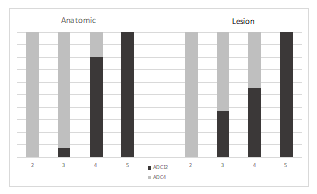
Figure 7: Diagram of image quality ratings for ADC4 and ADC12 maps.
On the left (anatomical conspicuity) and on the right (lesion conspicuity), there is a predominance of high ratings from both readers for the ADC12 map. (Likert Scale from 2-5).
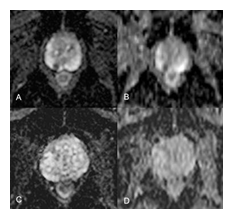
Figure 8: Comparison between image quality in ADC maps.
A and C, ADC12 sequence for characterization of a focal lesion (A) and anatomical aspects (C); B and D, ADC4 sequence for characterization of the same focal lesion (B) and anatomical aspects (D).
4. Discussion
Diffusion sequences are well established in the literature as a key tool for prostate imaging, and diffusion findings are particularly recognized as a biomarker of tumor aggressiveness as assessed by mp-MRI [6-11]. The present study demonstrated the feasibility of DWI sequences with 12 b values in clinical practice, as compared to the standard (4 b values) ADC mapping used in mp-MRI.
Protocols with different b values have been studied in the recent literature [15-19], but there is still no established consensus as to the technical parameters of choice for mp-MRI of the prostate. Even the latest version of PI-RADS, published in 2015 and updated in 2019 (PI-RADS 2.1), doesn’t come with the indication of how many b values should be used; it only recommends acquisition of a sequence with “ultra-high b values”, which may add benefit in identification of lesions, but at the expense of decreased image sharpness [10,15,16]. In addition, other studies on diffusion sequences of the prostate have described an overlap between malignant neoplasms and benign focal lesions that restrict diffusion, such as benign prostatic hyperplasia nodules and focal areas of prostatitis [11-12].
Different models of b-value optimization for mp-MRI have also been studied, such as conducting a comparison between sequences to calculate ADC map to find out which combination is most useful to discriminate between low and high-grade neoplasms [18]. The overall image quality of ADC maps has been studied by testing combinations of paired b values [19]. Other more complex and refined techniques for calculating ADC, such as IVIM [20] and diffusion kurtosis [21], have been proposed as alternatives for imaging of prostate tissue, but there is still no established consensus for their routine use in the clinic.
In this case series, the aim was to improve the technical and image quality parameters of ADC maps while maintaining their high diagnostic utility.
As a primary result, it was observed that the conspicuity and sharpness of the images obtained by the ADC map with 12 b values was significantly greater than that obtained with 4 b values, both for evaluation of anatomy and for focal lesions. Thus, interpretation of the images for characterization of suspicious lesions was significantly improved, overcoming a challenge that is reported in the current literature. This improvement in image quality substantially helps optimize the prostate scanning protocol. With the recent trend in the literature of making MRI the imaging modality of choice for PCa screening, consequently increasing the importance of T2 and DWI sequences [22-23], and the progressive shift toward biparametric rather than mp-MRI protocols, this optimization should be of great value to make scans more effective in identifying suspicious lesions. Also considering the near future and likely introduction of artificial intelligence-based diagnostic algorithms for mp-MRI, improving the definition of images used to train such diagnostic programs may enhance their performance for identification of suspicious lesions.
As a secondary result, ADC measurements were lower in neoplastic tissue compared to normal prostate tissue, with statistically significant differences in both the standard (4 b value) and new (12 b value) techniques. In addition, ADC maps obtained with 12 b values were comparable to those of the sequence obtained with 4 values, both having a similar distribution among patients, and a constant ratio being obtained in both maps. On analysis of correlation with the PI-RADS classification, they effectively distinguished between lower-grade (3) and higher-grade (4 and 5) tumors and can thus be considered a useful parameter for assessing the aggressiveness of focal prostate lesions.
Although a statistically significant correlation of ADC4 or ADC12 values with Gleason grade was not found, likely due to the small number of patients in whom histopathological examination of biopsy specimens was performed, mean absolute ADC values declined as the Gleason score rose, demonstrating that mean ADC values tend to correspond to tumor aggressiveness. Analysis of predictive value found that both sequences were good predictors of clinically significant cancer.
Major limitations of the present study include the technique of histopathological examination, which was performed on specimens obtained by cognitive fusion-targeted biopsy, while the gold-standard method for pathological study is prostatectomy. As a result, Gleason scores could have been different in some cases if specimens had been obtained by prostatectomy, thus changing the percentage of aggressive tumors. Another modality that is currently being studied and has shown promising results is MRI–ultrasound fusion biopsy of the prostate, which aids in adequate localization of the suspected lesion and allows collection of additional tissue fragments from the area that appears most abnormal on MRI [24-25]. Another limitation was the small number of patients whose biopsy was positive for prostate cancer (n=28), which is the probable cause of the limited statistical significance on comparison of ADC maps versus Gleason scores. It also bears stressing that, in clinical practice, there is a perception that positive biopsy results - especially with lower Gleason grades - may not correspond to a visible lesion on diffusion-weighted imaging. Therefore, a larger sample is needed, as well as further studies relating imaging techniques and biopsy findings with proven neoplasms, to adequately compare the diffusion sequence in mp-MRI with the anatomopathological results.
5. Conclusion
The present study sought to conduct a qualitative and quantitative evaluation of the use of an alternative to conventional diffusion sequences in mp-MRI of the prostate and analyze its possible implications in the diagnosis of PCa by magnetic resonance imaging.
The new technique using 12 b values was compared to the standard sequence already made (using 4 b values) regarding image quality, as well as a quantitative comparison by ADC measurement. Other validated comparison parameters were also used, such as the PI-RADS scale and the Gleason score, both of which perform well and are widely accepted and used in clinical practice by radiologists and urologists alike.
The conclusion is that a diffusion sequence with 12 b values is perfectly feasible for MRI study of the prostate, and that it provides superior image quality and clarity as compared to current techniques. It demonstrated a constant relationship with standard diffusion and superior anatomical definition, in addition to good correlation with the PI-RADS classification and with Gleason score, thus validating its clinical use.
References
- Sung H, Ferlay J, Siegel RL, et al. Global cancer statistics 2020: GLOBOCAN estimates of incidence and mortality worldwide for 36 cancers in 185 countries. CA Cancer J Clin 71 (2021): 209- 249.
- Steyn JH, Smith FW. Nuclear magnetic resonance imaging of the prostate. Br J Urol 54 (1982): 726-728.
- Poon PY, McCallum RW, Henkelman MM, et al.Magnetic resonance imaging of the prostate. Radiology 154 (1985): 143-149.
- Barentsz JO, Richenberg J, Clements R, et al. Radiology ESoU. ESUR prostate MR guidelines Eur Radiol 22 (2012): 746-757.
- American College of Radiology. Prostate Imaging Reporting and Data System (PI-RADS). 76(3) (2019): 340-351.
- Rosenkrantz AB, Parikh N, Kierans AS, et al. Prostate Cancer Detection Using Computed Very High b-value Diffusion-weighted Imaging: How High Should We Go? Acad Radiol 23 (2016): 704-711.
- Padhani AR, Liu G, Koh DM, et al. Diffusion-weighted magnetic resonance imaging as a cancer biomarker: consensus and recommendations. Neoplasia 11 (2009): 102-125.
- Anwar SS, Anwar Khan Z, Shoaib Hamid R, et al. Assessment of apparent diffusion coefficient values as predictor of aggressiveness in peripheral zone prostate cancer: comparison with Gleason score. ISRN Radiol 9 (2014).
- Hambrock T, Somford DM, Huisman HJ, et al. Relationship between apparent diffusion coefficients at 3.0-T MR imaging and Gleason grade in peripheral zone prostate cancer. Radiology 259 (2011): 453-461.
- Tamada T, Kanomata N, Sone T, et al. High b value (2,000 s/mm2) diffusion-weighted magnetic resonance imaging in prostate cancer at 3 Tesla: comparison with 1,000 s/mm2 for tumor conspicuity and discrimination of aggressiveness PLoS One 9 (2014): e96619.
- El Kady RM, Choudhary AK, Tappouni R. Accuracy of apparent diffusion coefficient value measurement on PACS workstation: A comparative analysis. AJR Am J Roentgenol 196 (2011): 280-284.
- Hoeks CM, Vos EK, Bomers JG, et al. Diffusion-weighted magnetic resonance imaging in the prostate transition zone: histopathological validation using magnetic resonance-guided biopsy specimens. Invest Radiol 48 (2013): 693-701.
- Metens T, Miranda D, Absil J, et al. What is the optimal b value in diffusion-weighted MR imaging to depict prostate cancer at 3T? Eur Radiol 22 (2012): 703-709.
- Manenti G, Nezzo M, Chegai F, et al. DWI of Prostate Cancer: Optimal b-Value in Clinical Practice. Prostate Cancer 4(2014).
- Kitajima K, Takahashi S, Ueno Y, et al. Clinical utility of apparent diffusion coefficient values obtained using high b-value when diagnosing prostate cancer using 3 tesla MRI: comparison between ultra-high b-value (2000 s/mm²) and standard high b-value (1000 s/mm²). J Magn Reson Imaging 36 (2012): 198-205.
- Grant KB, Agarwal HK, Shih JH, et al. Comparison of calculated and acquired high b value diffusion-weighted imaging in prostate cancer. Abdom Imaging 40 (2015): 578-586.
- Bittencourt LK, Attenberger UI, Lima D, et al. Feasibility study of computed vs measured high b-value (1400 s/mm²) diffusion-weighted MR images of the prostate. World J Radiol 6 (2014): 374-380.
- Hurrell SL, McGarry SD, Kaczmarowski A, et al. Optimized b-value selection for the discrimination of prostate cancer grades, including the cribriform pattern, using diffusion weighted imaging. J Med Imaging (Bellingham) 5(2018): 011004.
- Xi Y, Liu A, Olumba F, et al. Low-to-high b value DWI ratio approaches in multiparametric MRI of the prostate: feasibility, optimal combination of b values, and comparison with ADC maps for the visual presentation of prostate cancer. Quant Imaging Med Surg 8(2018): 557-567.
- Pang Y, Turkbey B, Bernardo M, et al. Intravoxel incoherent motion MR imaging for prostate cancer: an evaluation of perfusion fraction and diffusion coefficient derived from different b-value combinations. Magn Reson Med 69(2) (2013): 553-562.
- Rosenkrantz AB, Sigmund EE, Johnson G, et al. Prostate cancer: feasibility and preliminary experience of a diffusional kurtosis model for detection and assessment of aggressiveness of peripheral zone cancer. Radiology 264(1) (2016): 126-135.
- Barth BK, De Visschere PJL, Cornelius A, et al. Detection of Clinically Significant Prostate Cancer: Short Dual-Pulse Sequence versus Standard Multiparametric MR Imaging-A Multireader Study Radiology 28 (3) (2017): 725-736.
- Kuhl CK, Bruhn R, Krämer N, et al . Abbreviated Biparametric Prostate MR Imaging in Men with Elevated Prostate-specific Antigen. Radiology 285(2) (2017): 493-505.
- Ahmed HU, El-Shater Bosaily A, Brown LC, et al. Diagnostic accuracy of multi-parametric MRI and TRUS biopsy in prostate cancer (PROMIS): a paired validating confirmatory study. Lancet 389(10071) (2017): 815-822.
- Mariotti GC, Costa DN, Pedrosa I, et al . Magnetic resonance/transrectal ultrasound fusion biopsy of the prostate compared to systematic 12-core biopsy for the diagnosis and characterization of prostate cancer: multi-institutional retrospective analysis of 389 patients. Urol Oncol 34(9) (2016): 416
